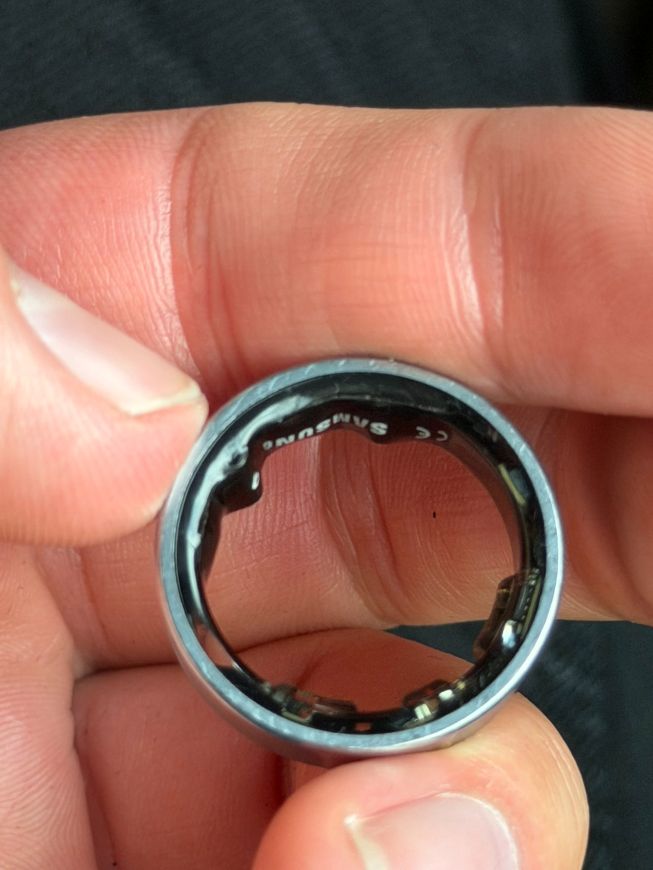Welcome to Tech Talk, a weekly column about the things we use and how they work. We try to keep it simple here so everyone can understand how and why the gadget in your hand does what it does.
Things may become a little technical at times, as that’s the nature of technology — it can be complex and intricate. Together we can break it all down and make it accessible, though!
Tech Talk

(Image credit: Future)
How it works, explained in a way that everyone can understand. Your weekly look into what makes your gadgets tick.
You might not care how any of this stuff happens, and that’s OK, too. Your tech gadgets are personal and should be fun. You never know though, you might just learn something …
You may like
Deals on today’s best phones
It’s a gas, man
(Image credit: @ZONEofTECH / X)
Most of us have either had a device with a swollen battery or heard about it happening to someone. This is quickly followed by “Stop using it and get it looked at.” Ever wonder why it happens or what’s so dangerous about it?
Hydrogen. It’s what causes the swelling, and when hydrogen — a volatile, highly flammable gas — is anywhere near a potential ignition source, some very, very bad things can happen.
It’s not normal, even if it is fairly common, and a lot of tech goes into trying to prevent it. Here’s what you need to know about it.
Where does the hydrogen come from?
The batteries used in everything from phones to laptops to electric cars are based on similar technology, with lithium as a common ingredient. This is great because these types of batteries have a relatively large capacity for their size, a fairly long lifespan, and can deliver plenty of power.
Lithium has another property that’s not as good: it can emit hydrogen gas under certain conditions. When combined with the construction of the battery used in things like phones, a battery can turn into a puffy, spicy pillow because it swells.
I’m going to use a phone battery as an example, but the same applies to the batteries in your smartwatch, smart ring, tablet, and laptop. Common things tech enthusiasts all seem to have.
The battery in your phone is basically a thermoplastic foil pouch. It has a shape because of the components inside it, which divide cells or act as electrodes, but it’s still just a foil pouch made of very thin, flexible material. It’s also sealed very well, though some batteries, like the behemoths used in EVs, will have a one-way valve to prevent gas build-up inside this foil casing.
When you “mistreat” the battery, the lithium produces hydrogen gas as a byproduct. Hydrogen is made of very small particles and will escape through the tiniest of openings most of the time. But a sealed battery — one without a gas escape valve — is usually well sealed enough to prevent gas from escaping.
When you pump gas into a flexible container and have no way to use it, it builds up. It will eventually cause the foil to stretch and balloon up, often enough to separate a phone’s body or even crack the screen.

(Image credit: Android Central)
I said “mistreat” earlier. It’s not hard to force hydrogen release because batteries can be sensitive to external factors. That sounds like doublespeak, but if everything was working properly and the battery stayed under optimal conditions all of the time, it wouldn’t happen. What causes it to happen?
Overcharging, undercharging, and overheating can all lead to a swollen battery. Plenty of safeguards are in place to try to prevent this, but we still find ways to do it.
Physical damage will almost certainly cause it to happen. A battery is designed as a precision component where everything has a place. If something happens that damages the construction or placement of a battery’s internals, swelling can result.
An internal short circuit can cause battery swelling, and there’s an easy way to trigger one: charging a battery when it’s too cold. Never charge or store your battery where the temperature is below freezing. In fact, it’s a good practice to not even use a device with a lithium battery when it’s too cold.
Yes, you should try to be careful of how you treat your battery. They can be dangerous if used improperly, and a battery swollen with hydrogen gas only needs a spark for everything to become very dangerous.
This is why we’re told to stop using any electronic device with an obviously swollen battery. Thermal runaway combined with an explosive gas is bad news.
What can you do to prevent it?

Thankfully, this is fairly easy to mitigate. Something out of your control can happen, naturally, but the biggest issues come from “mistreating” the battery. Notice I don’t list old age as a reason for battery swelling; a battery getting old is more susceptible to thermal and charging issues, but age won’t cause a lithium battery to emit hydrogen on its own.
Always charge your battery with the proper charger and cable. If your new gadget doesn’t come with a cable or plug, the papers that were in the box or available online will tell you what those are.
Try to limit your gadget use when and where it’s bitterly cold. Batteries hate heat and cold equally.
Never charge your battery where it’s below freezing. Ever. This is almost a guarantee that you’ll create shorts inside the assembly, and it can be a major factor for a swollen battery.
Of course, if your battery is noticeably swollen, power the device off and let it sit somewhere safe for at least a few hours (because of a phenomenon called hysteresis) so the current can stop flowing. Then take it to someone who can open the device and have a look. It’s just not worth it.
FAQWhy do lithium-ion batteries swell or bulge?
Battery swelling occurs when the lithium in the battery is “mistreated,” causing it to release hydrogen gas. Because the battery is sealed in a flexible pouch, these gases have nowhere to escape, causing the casing to expand.
What are the main factors that cause a battery to swell?
There are a few reasons a battery will swell, including overcharging, undercharging, overheating, physical damage, or an internal short circuit as the result of charging a battery in very cold temperatures.
Is a swollen battery dangerous, and what are the risks?
Yes, a swollen battery is a major safety hazard and should be treated as unstable. The increasing internal pressure poses a serious risk of rupture, fire, or explosion, particularly if the cell is punctured, squeezed, charged, or subjected to more heat. The gases released are also toxic.
How can you avoid a swollen battery?
Use proper charging cables and adapters, avoid charging your devices in below-freezing temperatures, avoid damaging or puncturing your device (use a case), and try not to use devices in extremely cold weather.

